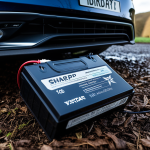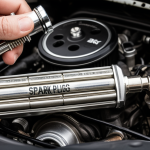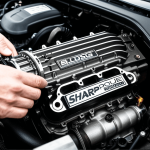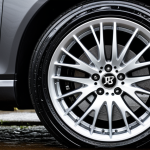Essential Maintenance Practices for Heated Seats
Maintaining heated seats involves several seat care essentials to ensure their longevity and functionality. Regular inspection for wear and tear is crucial; check seams, fabric integrity, and wiring accessibility. Early detection of damage can prevent costly repairs and extend the heated seat lifespan.
Cleaning heated seats requires a careful step-by-step process. Begin by vacuuming to remove debris, followed by gentle wiping with a damp cloth. Use mild, non-abrasive cleaners specifically designed for automotive interiors to avoid damaging the heating elements or upholstery. Harsh chemicals can degrade the electrical components embedded in the seat.
A lire en complément : Maximize Your Vehicle’s Safety: Expert Strategies for Evaluating and Improving Lane Departure Warning System Performance
Choosing appropriate cleaners and protectors plays a key role in prolonging seat lifespan. Opt for pH-balanced solutions and conditioners suited to the seat material, whether leather or fabric. Using compatible protectors helps maintain seat suppleness and protects against spills and stains, which can impair heating effectiveness.
Following these heated seat maintenance practices not only safeguards comfort but also prevents premature failures, ensuring your seat’s warmth functions reliably for years.
En parallèle : Essential Safety Tips for Installing Aftermarket Performance Exhaust Systems: A Comprehensive Guide
Essential Maintenance Practices for Heated Seats
Proper heated seat maintenance starts with regular inspection for wear and tear. Look closely at seams, stitching, and surface material to detect any early signs of damage. Checking electrical connections and wiring accessibility is vital, as hidden faults can lead to seat malfunctions. Identifying issues early helps prevent costly repairs and supports prolonging seat lifespan.
When it comes to cleaning, follow a gentle, step-by-step process tailored for heated seats. First, remove loose dirt and debris using a vacuum. Then, wipe surfaces with a damp cloth and use mild, non-abrasive cleaners specifically designed for automotive interiors. Avoid harsh chemicals that could compromise the heating elements embedded within the seat. This careful approach is a key part of the seat care essentials.
Equally important is selecting the right cleaners and protectors. Use pH-balanced products compatible with your seat’s material—be it leather or fabric—to maintain softness and durability. Protective treatments guard against spills and stains, which can degrade functionality over time. Together, these practices ensure effective heated seat maintenance and keep your seat performing at its best.
Enhancing Comfort Through Proper Heated Seat Care
Maintaining ideal warmth and comfort for every drive
Proper heated seat adjustment is key to improving seat comfort. Setting your heated seat to moderate levels prevents hotspots and uneven warmth, which can cause discomfort during extended use. Many modern vehicles offer multiple heat settings; experiment to find the balance that suits your preference while avoiding excessive heat that may strain the seat’s components.
To optimize comfort, regularly alternate heat settings and avoid continuous high-temperature use. This practice supports both comfort optimisation and helps in prolonging seat lifespan by reducing wear on heating elements. Additionally, softening your seat with appropriate conditioners as part of your seat care essentials keeps the material supple, enhancing the overall feel.
Preventing discomfort also involves routine checks for irregularities in warmth distribution. Uneven heating can suggest underlying issues, so timely inspection aids in maintaining effective heated seat maintenance. Following these steps not only elevates driving enjoyment but also safeguards the seat’s performance and durability over time.
Essential Maintenance Practices for Heated Seats
Heated seat maintenance relies heavily on regular inspection for wear and tear. Carefully examine seams, stitching, and fabric for early signs of damage that could affect function and comfort. Pay special attention to wiring and electrical connections, which are vulnerable spots that can lead to malfunction if neglected. Spotting issues early is critical for prolonging seat lifespan and avoiding costly repairs.
A thorough step-by-step cleaning process for heated seats begins with vacuuming to remove loose debris. Next, gently wipe the surface with a damp cloth using mild, automotive-grade cleaners designed specifically for heated seating materials. These cleaners should be pH-balanced to protect both leather and fabric upholstery while preventing deterioration of embedded heating elements. Avoid harsh or abrasive products as they can damage sensitive parts, undermining seat performance.
Choosing appropriate cleaners and protectors is equally crucial. Selecting compatible conditioners and protective sprays helps maintain the seat’s softness and durability over time. Using products intended for the material type supports effective heated seat maintenance and guards against stains or spills that could degrade heating efficiency. Together, these seat care essentials ensure your heated seats remain comfortable and reliable.
Essential Maintenance Practices for Heated Seats
Ensuring durability through attentive care
Regular heated seat maintenance begins with vigilant inspection for wear and tear. Focus on seams, stitching, and fabric integrity since damage here can affect both comfort and functionality. Equally crucial is checking electrical wiring access points to spot any loose connections or fraying that might cause malfunctions. Early detection plays a vital role in prolonging seat lifespan by addressing minor issues before they escalate.
A meticulous, step-by-step cleaning process for heated seats safeguards their performance. Start by vacuuming to eliminate dust and debris that might embed within fabric or crevices. Next, clean the surface using a damp cloth with mild, pH-balanced cleaners designed specifically for automotive interiors containing heating elements. Harsh or abrasive cleaners can degrade both upholstery and heating parts, so their rejection is essential for effective heated seat maintenance.
Selecting the right protectors and conditioners forms a core part of seat care essentials. Choose products compatible with your seat’s material type, whether leather or fabric, to maintain softness and prevent cracking or staining. Proper product choice also helps shield sensitive heating components, thereby sustaining seat comfort and efficiency over time.
Essential Maintenance Practices for Heated Seats
Maintaining functionality with precision care
Regular heated seat maintenance begins with systematic inspection for wear and tear, focusing on seams, stitching, and fabric integrity. Checking electrical wiring and connectors ensures early detection of potential failures, which is vital for prolonging seat lifespan. Small damages can quickly escalate, so timely intervention reduces costly repairs.
A detailed, step-by-step cleaning process for heated seats involves first vacuuming to remove debris lodged in crevices. Next, gently wipe the seat with a damp cloth and mild, pH-balanced cleaners designed for heated upholstery. These cleaners protect delicate heating elements and upholstery from damage. Avoid harsh chemicals or abrasive tools that risk deteriorating seat material or wiring.
Choosing the right cleaners and protectors is a cornerstone of seat care essentials. Opt for conditioners and protective sprays compatible with your seat’s material—whether leather or fabric—to maintain softness and prevent cracking or staining. Such products not only preserve appearance but also prevent moisture damage that could impair heating functionality.
Adhering to these maintenance practices ensures your heated seats remain comfortable and fully operational over extended periods, maximizing their lifespan.
Essential Maintenance Practices for Heated Seats
Care fundamentals for longevity and performance
Regular inspection for wear and tear is vital for effective heated seat maintenance. Pay close attention to seams, stitching, and fabric, as these areas often reveal early signs of damage. Electrical wiring and connectors demand extra scrutiny because any fraying or looseness can cause serious malfunctions. Catching these issues early is key to prolonging seat lifespan and avoiding expensive repairs.
A thorough step-by-step cleaning process for heated seats helps preserve both comfort and functionality. Begin with vacuuming to remove dust and debris lodged in crevices. Then, use a damp cloth with mild, pH-balanced cleaners tailored specifically for heated seat materials. These cleaners protect delicate heating elements and upholstery from damage. Avoid harsh chemicals or abrasive tools to maintain the integrity of both fabric and electrical components.
Selecting the right cleaners and protectors is another crucial aspect of seat care essentials. Use conditioners and sprays compatible with your seat type—leather or fabric—to keep surfaces soft and resilient. These products also shield against stains and moisture, helping to maintain consistent heating performance. Employing the right maintenance practices ensures your heated seats provide reliable warmth and last longer.









